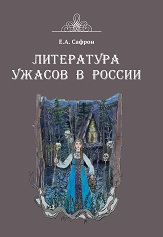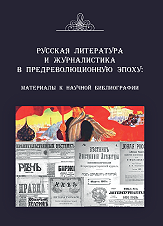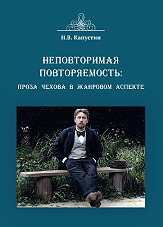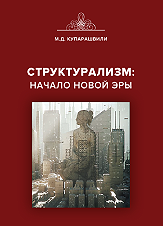Nikandrova Olga V.,
PhD in Philology,
Associate Professor at the Department of Slavic Philology
St. Tikhon’s Orthodox University for the Humanities
e-mail: onikandrona@mail.ru
The article outlines the significance of the masquerade image for the poetics of the Silver Age and examines various aspects of its semantics: joyful carnival laughter, “a feast during the plague”, and macabre, gloomy merriment. Based on the works of Fyodor Sologub, Alexander Blok, Andrey Bely, and Konstantin Bal’mont, the article explores the connection between the interpretation of the masquerade and the overall image of the world, and analyzes the semantic shifts in the interpretation of typical plot situations. In particular, the variety of comic forms in Sologub’s novel “Little Demon” is examined, and it is shown how the tradition of carnival joy takes on dark and bitter shades, as the author unexpectedly changes the reader’s perspective, and we feel what the victim of carnival deconstruction experiences. Sologub also questions the element of carnival triumphing corporeality, as in a world where beauty is trodden and abused, trust in the carnal principle is completely destroyed. Blok’s “The Snow Mask” and Bely’s “Petersburg” are considered as works in which the holiday is transformed into a “feast during the plague”. In works related to the tradition of medieval macabre, the focus is on shifting the meaning from a warning about the future to a discussion about the present, as the dance of Death is transferred from the world of the deceased to the realities of the living.
Keywords: masquerade, carnival, laughter, dance macabre, F. Sologub, A.A. Blok, A. Bely, K.D. Bal’mont
References
- Bakhtin M.M. Sobranie sochinenii: v 7 t. T. 4 (2). Moscow: Russkoe slovo, 2010. 747 s.
- Bogomolov N.A. Simvolicheskoe zhiznetvorchestvo kak razvlechenie // Russkaia razvlekatel’naia kul’tura Serebrianogo veka, 1908–1918. Moscow: VSHE, 2017. S. 19–30.
- Tihvinskaia L.I. Povsednevnaia zhizn’ teatral’noi bogemy Serebrianogo veka. Moscow: Molodaia gvardiia, 2005. 527 s.
- Sologub F. Sobranie sochinenii: v 6 t. T. 2. Moscow: Intelvak, 2001. 621 s.
- Blok A.A. Sobranie sochinenii: v 8 t. Moscow; Leningrad: Goslitizdat, 1960–1963. T. 2. 466 s.; T. 3. 714 s.; T. 8. 171 s.
- Belyi A. Peterburg. Moscow: Nauka, 1981. 696 s. (Literaturnye pamiatniki).
- Kheizinga I. Osen’ Srednevekov’ia. St. Petersburg: Izd-vo Ivana Limbakha, 2011. 768 s.
- Deliumo Zh. Grekh i strakh: formirovanie chuvstva viny v tsivilizatsii Zapada (XIII–XVIII vv.). Ekaterinburg: Izd-vo Ural. un-ta, 2003. 750 s.
- Bal’mont K.D. Sobranie sochinenii: v 7 t. T. 1. Moscow: Knizhnyi klub Knigovek, 2010. 502 s.





.png)







